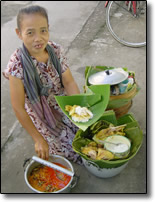
Surakarta (Solo)
From Surabaya, we took the train through central Java to Surakarta. Unlike the rugged volcanoes of East Java, the eastern central plains are flat, with rice fields and sugar-cane plantations. “Solo”, the unofficial name for Surakarta, is a relaxed, easy-going place. We immediately noticed that people were more polite and well-spoken (“halus”, meaning refined in Indonesian) than in East Java (“kasar”, or coarse). We found a place to stay in a converted Javanese palace with a group of French tourists taking a gamelan class. Solo provides the best opportunities to witness traditional high culture in Java, if not all of Indonesia. From dance to shadow-puppets to court gamelan, everything is regularly on the program. On our first day in town, in the outdoor pavilion of the “Kraton”, or royal palace, there was dance practice with live music. Later that night was a performance at the University of Art and Culture, featuring music from around Indonesia. Not only was there gamelan from different parts of Java, but there was also music from Bali, Sulawesi, Kalimantan and Sumatra.
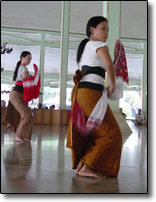 |
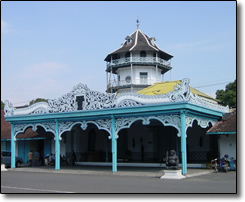 |
The next morning we rented a motorbike to visit a pair of nearby temples. With the crazy traffic and choking exhaust fumes, it was difficult to get out of town. High on the slopes of Mt. Lawi, a dormant volcano, Candi Suko and Candi Cetho were some of the last Hindu temples built before Java converted to Islam. Candi Suko is interesting for its stone carving. On the way to Candi Cetho, higher up the mountain, we passed tea plantations. We had to push our motorbike the last part of the steep road. Afternoon fog rolled down from the summit, obscuring the temple. Built from black, volcanic rock with ornamental gateways and laid out in a straight line, Candi Cetho looked eerie and mysterious in the swirling mist. A pedestal carved like a flat turtle stood by one of the gates. A small stone pyramid at the top of the slope terminated the linear layout.
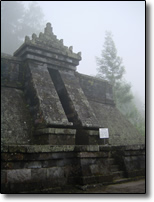 |
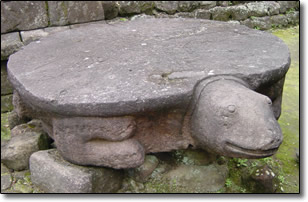 |
On our way down the mountain on our motorbike we stopped at a roadside restaurant for snack and some freshly made hot roasted ginger tea. We struck up a conversation with two men sitting next to us, and discovered that they were eating dog. When we looked surprised, they told us that they were Christians, and that the meat was “medicine” to ward off the chill. I tried a bite, a piece of liver that didn’t taste very good. Later, on the way back to Solo, we stopped at a roadside restaurant for some rabbit sate basted with thick, sticky-sweet peanut sauce.
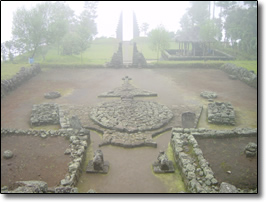 |
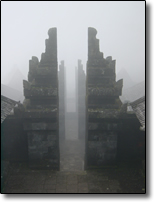 |
That night in Solo there was another dance performance. The costumes and acting were good, but there sure was a lot of dialogue in Javanese! We both fell asleep in our seats, waking up in the middle of a fight scene full of frantic posturing and wildly clashing cymbals. After the performance, it was time to try the local dessert. “Srabi” are open-faced pancakes made from rice flour and coconut milk, topped with bananas and chocolate sprinkles. We quickly made friends with the Srabi woman on our street, and always received fresh ones hot from the griddle. For breakfast, street vendors sell “Nasi Liwet”, another Solo specialty. We bought ours from a lady carrying two large pots on a pole across her shoulder. Folding a banana leaf into a cone, she added rice, noodles, some cooked chicken, boiled greens and fried tofu, then poured a succulent reddish sauce with a kind of shredded, boiled vegetable over the whole thing. Delicious!
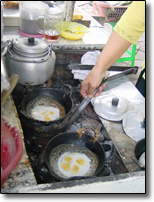 |
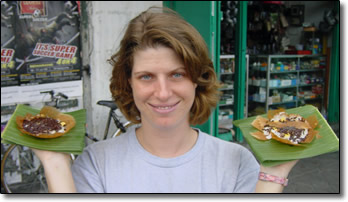 |
